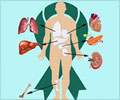
According to the study authors, olfactory neural stem cells can be derived from a patient's own cells, they are readily available by a minimally invasive biopsy technique, and they can be expanded in vitro. The cells are plentiful because the olfactory epithelium undergoes neurogenesis and continual replacement of sensory neurons throughout adult life.
"Using the rat as our animal model source, we examined the basic aspects of olfactory neural stem cell biology and its potential for self-renewal and phenotypic expression in various circumstances," said Dr. Wetzig. "Previously, we found that they have performed well in pre-clinical models of disease and transplantation and seem to emulate a wound healing process where the cells acquire the appropriate phenotype in an apparently orderly fashion over time."
The researchers concluded that the olfactory neurospheres contain stem cells whose capacity for differentiation is triggered by signals from the immediate environmental niche.
"Stem cell numbers were shown to be enriched by our culture methods," explained Dr. Wetzig. "We also demonstrated that when adult olfactory stem cells are transplanted into an environmental niche different from that of their origin, they demonstrate multipotency by acquiring the phenotype of the resident cells."
"This study highlights another potential source of stem cells that has shown some degree of promise in a number of studies" said Dr. John Sladek, professor of neurology and pediatrics at the University of Colorado School of Medicine. "Their relatively easy accessibility and multipotent properties are important factors that could rank these cells competitively with other stem cells thus giving them a potential impact as an excellent source for cell therapy".
Advertisement













